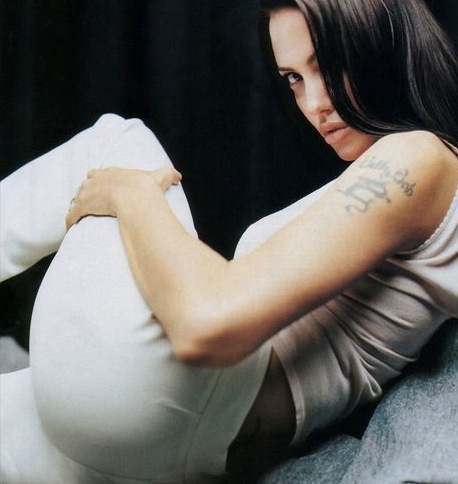I'm just a sucker for tufting headboards. This is not the first time that I am posting about tufted headboards, I was reading the addicted4decorating blog and I was mesmerized with Kristi’s work and how she finished a diamond-tufted headboard by herself.
Via The Paris Apartment, queen size $2200
This deep tufting can be quite difficult for those who want to make it themself. But it shouldn't be! Once you learn the process, you'll wonder who in their right mind would ever pay such an extravagant price for a headboard.
Kristi shows us how to save a small fortune.
First of all, you'll need to determine the size of your headboard. The one Kristi made for Gwen was a king size, so she made it 80" wide x 34" high. This allowed for a couple of inches to tuck behind the mattress at the bottom.
Once you've determined the finished size you want, go to Home Depot or Bauhaus and purchase a piece of 1/2" MDF, and have them cut it to size for you.
You'll also need:
• A bowl or small plate (optional);
• A Sharpie marker;
• A jigsaw (optional);
• An electric meat carving knife;
• A tape measure;
• A yard stick or other long straight edge for marking lines;
• Staple gun and staples;
• Your choice of fabric, large enough to cover the headboard size, plus about 18 inches on each side;
• 2" foam, large enough to cover the MDF (this can be pieced together, if necessary);
• hi-loft polyester batting, enough for at least two layers to cover the MDF;
• Adhesive for the foam (Kristi prefers spray adhesive, although the fumes are quite noxious, so it has to be used outside, or you need to wear a protective mask);
• buttons...lots and lots of buttons (Gwen's king size headboard required 57 buttons, and I used half ball cover buttons and covered them in the same fabric as the headboard. It's a pain, but just go ahead and prepare these in advance, according to the instructions on the package.)
• One package of thin nylon or polyester upholstery/roman shade cord (can be found in the upholstery section at JoAnn Fabrics or other fabric stores);
• A large-eye upholstery or embroidery needle; and
• An electric drill with 3/8" drill bit.
Don't be frightened by the list! Kristi says that you can do this! :)
To start, you will need to place your MDF on some support where both the top and the bottom can be accessed. Workhorses would be preferable, she used two chairs.
This step is optional: On the two top corners of the headboard, use a small bowl or plate as a template to round the corners.
Use a jigsaw to trim along the pencil mark to create rounded corners. Remove rough edges with sandpaper.
Now adhere the 2" foam to the MDF using your choice of adhesive. I prefer spray adhesive, but if you use it indoors, be sure that you use a protective mask, and that all furry and feathered creatures are in another room protected from the fumes.
You may need to piece the foam to cover the entire piece of MDF. That's not a problem at all. Just be sure to get the pieces butted against each other as smoothly and evenly as possible. Trim any excess foam with your electric meat carving knife.
Now we need to mark where our buttons will go:
Starting from the top of the headboard, place a mark at 8", 16", and 24". Do this in several places so that you can use those marks as guides to draw horizontal lines. Then use your yardstick or straight edge to create horizontal straight lines all the way across the width of the headboard.
Starting from the top of the headboard, place a mark at 8", 16", and 24". Do this in several places so that you can use those marks as guides to draw horizontal lines. Then use your yardstick or straight edge to create horizontal straight lines all the way across the width of the headboard.
Find the center of the headboard, and place a mark at the center of each horizontal line. Use your tape measure, and beginning from the center marks, place a mark every 8 inches.
Now use your straight edge, and place diagonally between the marks you just made at 8" intervals. This will show you where the buttons need to be placed on the diagonal.
Once you've got the whole headboard marked, it should look something like this. The top of the headboard is the long edge on the right side of the picture.
Next, use your drill to drill a hole through the foam and the MDF. Warning!! DO NOT go slowly on this. If you begin to drill slowly, the drill bit will grab the foam and rip it to shreds. You want to place the drill bit on the button mark, press down all the way so that you can feel the MDF, and then at FULL SPEED, drill very quickly through the foam and the MDF.
This next step is the one I dread the most, but it's necessary. Professionals have a nifty little tool they use for this, but since Kristi is not a professional upholsterer, she had to make do with substitutes.
The goal here is to make holes in the foam for every single button that's large enough for the button to rest at the bottom of the hole. Make sense? In order to do this, Kristi used a combo of this little "tool" and my fingers to pinch out the extra foam. This tool is nothing more than two different pieces she found in the plumbing section at Home Depot. She place the pipe onto the button hole area, and begin twisting.
The goal here is to make holes in the foam for every single button that's large enough for the button to rest at the bottom of the hole. Make sense? In order to do this, Kristi used a combo of this little "tool" and my fingers to pinch out the extra foam. This tool is nothing more than two different pieces she found in the plumbing section at Home Depot. She place the pipe onto the button hole area, and begin twisting.
This is the least fun, the messiest, and potentially the most frustrating part of the whole process, but when it's finished and the mess is cleaned up, it should look like this...
Now you're ready for batting. Kristi always use two layers of hi-loft batting (it'll say hi-loft on the package). The more layers you use, the deeper the tufting will appear...but of course, the more you use, the more your project will cost, and this stuff ain't cheap!!
Then spread out your fabric on top of the batting. Be sure that the fabric is centered, and there's plenty of extra on all four sides.
To begin the tufting, you'll start in the center of the headboard, working your way down on the main lines you drew at 8", 16", and 24". As you work from one button to the next, be sure that the fabric is not pulled too tight. If you pull it too tight, you'll lose the look of the deep tufting.
If you need guidance on how to string the buttons, and how to secure them on the back with your staple gun, you can refer to step #23 through step #25 of this upholstered headboard DIY for details.
To begin the tufting, you'll start in the center of the headboard, working your way down on the main lines you drew at 8", 16", and 24". As you work from one button to the next, be sure that the fabric is not pulled too tight. If you pull it too tight, you'll lose the look of the deep tufting.
If you need guidance on how to string the buttons, and how to secure them on the back with your staple gun, you can refer to step #23 through step #25 of this upholstered headboard DIY for details.
Continue working across the horizontal lines with the buttons. It should look something like this...
After you finish all of the buttons on the horizontal lines, you'll start on the diagonals. This is where the magic happens! When you press down on the diagonal, the tufts and folds should pretty much form by themselves. You may want to work with them a bit to create neater and cleaner folds, but you shouldn't have to do too much.
Once you've finished all of the diagonals, your headboard really begins to look like something quite special!!!
The only thing left to do to finish the front is to secure the edges of the fabric and batting. Begin at one of the buttons, and create a nice, neat fold. Wrap around to the back and secure with your staple gun. You will do this around the entire headboard, creating a fold from each button to take up the slack in the fabric.
Once you've made it all the way around, the front of your headboard is finished!!
The back of your headboard will look like this. Pretty, huh?
The last thing left to do is to clean up the edges on the back. You'll have extra batting and fabric, so add a few more staples all the way around, and trim off the extra fabric and batting.
It doesn't have to look perfect, or even pretty, but you do want it to be flat so that your headboard can rest flat against the wall. Also, give all of your staples one last inspection, and hammer in any that aren't all the way in.
And you're done! Now step back and admire your handiwork.
Kristi says: "Once you understand the process, you can easily modify the plans the create any shape you want. If you want a curvy headboard, like the one in the first picture, then start by drawing your shape, cut it out with your jigsaw, glue the foam and trim to the shape using an electric meat knife, and then start at the center line to mark your buttons. The process is the same."
Thanks to Kristi for her creative work, and these pictures are very useful and can give all DIYers helpful advice.
Thanks to Kristi for her creative work, and these pictures are very useful and can give all DIYers helpful advice.
Below: Here is a photo of this headboard in the room for which it was created...
Splendid!
{source: http://blog.addicted2decorating.com/}















No comments:
Post a Comment